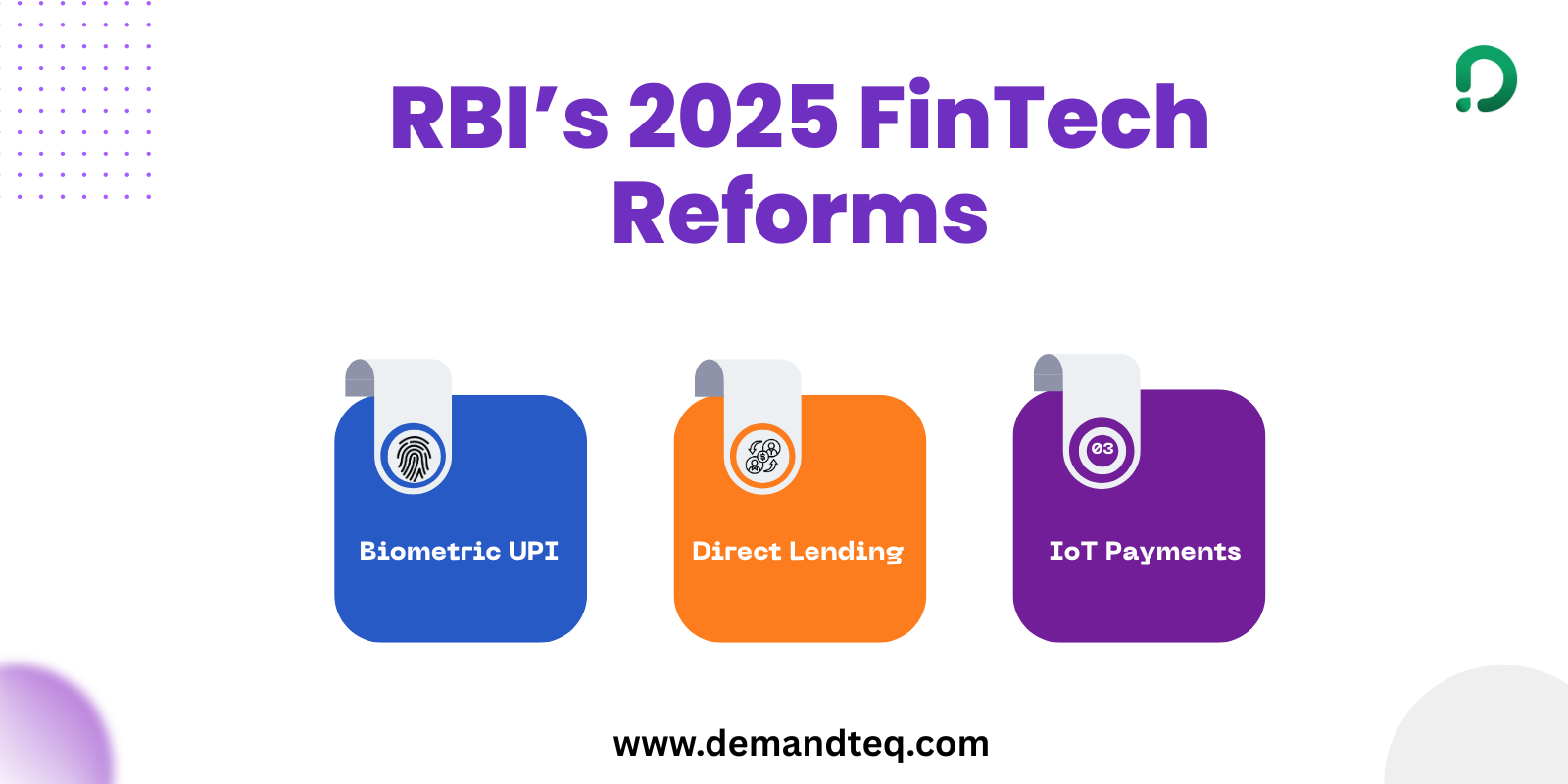India’s fintech sector is rapidly evolving like never before. At the 2025 Global Fintech Fest, the Reserve Bank of India (RBI) and NPCI unveiled major updates to UPI, paving the way for biometric payments, face authentication, and IoT-based transactions.
Meanwhile, fintech giants like Amazon and Pine Labs are rewriting the rules of lending and digital finance. These developments signal a new phase in India’s FinTeq journey — one where security, inclusion, and innovation converge.
The Evolving FinTeq Landscape
Over the last decade, UPI has transformed how India pays — democratizing access to digital transactions and driving financial inclusion. Yet, the journey is far from over. As consumer expectations evolve, the fintech ecosystem is now moving toward hyper-personalized, intelligent, and seamless digital finance — powered by AI, biometrics, and embedded finance.
Key Developments Shaping FinTeq in 2025
1. RBI Unveils Next-Gen UPI Capabilities
At the Fintech Fest, the RBI announced four major UPI innovations designed to make digital transactions
faster, safer, and more inclusive:
- IoT-Based UPI Payments: Enabling payments through smart devices and wearables.
- UPI “Reserve Pay”: Allowing users to block funds or credit limits for repeat transactions.
- Interoperable Net Banking (Banking Connect): One integration, multiple banks — simplifying payment flows for users and businesses.
- AI-Powered UPI Help: Intelligent support assistant built on NPCI’s small language model to enhance customer experience.
Biometric & Face Authentication — A Game Changer
RBI and NPCI introduced biometric authentication for UPI payments, removing the need for a traditional PIN. Users can approve transactions via fingerprint, iris, or face scans, creating a PIN-free, frictionless experience.Face authentication for UPI onboarding, integrated with UIDAI’s biometric database, enables users to create or reset UPI PINs simply by scanning their face, boosting accessibility and security.
Why It Matters-
- Frictionless UX: One-tap approvals enhance speed and convenience.
- Enhanced Security: UIDAI-linked verification drastically reduces fraud.
- Financial Inclusion: Helps senior citizens and rural users.
- Fintech Integration Opportunity: Apps can embed biometric APIs for faster onboarding and higher transaction success rates.
2. Amazon Secures Direct Lending License
In September 2025, Amazon acquired Bengaluru-based Axio and obtained a direct lending license from RBI. This enables Amazon to issue loans directly, reshaping India’s digital credit landscape.
Implications: Fintechs must explore embedded lending and platform-based credit offerings to stay competitive.
3. Pine Labs IPO Approved
India’s market regulator approved the Pine Labs IPO, signaling strong investor confidence in payments and merchant finance.
4. RBI Grants SRO Status to FIDC
RBI granted self-regulatory organization (SRO) status to FIDC, enhancing governance, compliance, and risk oversight for NBFCs and fintech lenders.
Implications for Stakeholders
Payment & Wallet Players:
- Integrate biometric & IoT-based UPI flows.
- Leverage AI analytics to reduce drop-offs.
Lending & Embedded Finance Startups:
- Prepare for stricter RBI norms.
- Explore UPI Reserve Pay & embedded credit models.
Regulators & Industry Leaders:
- Balance innovation with inclusion.
- Build transparency, consent, and data protection frameworks.
Challenges Ahead
- Regulatory complexity for expanding payment & lending services.
- Cybersecurity risks with more digital touchpoints.
- User awareness for biometric safety.
- Infrastructure investment for AI, IoT, and biometric integration.
Conclusion
The 2025 FinTeq updates — biometric UPI, face authentication, IoT payments, and direct lending — signal a new era in India’s digital finance. Fintechs that embrace innovation while ensuring security, inclusion, and compliance will not only stay ahead but also shape the future of payments and lending in India. The time to adapt and innovate is now.


